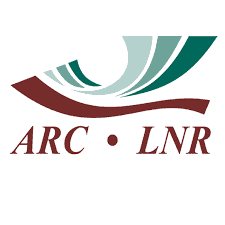Professional Passenger Transport

Taxi Driver Career Opportunities
The taxi driver career profession represents an essential transportation service provider focused on safely conveying passengers to their destinations through intimate knowledge of local areas, efficient route selection, and professional customer service.
These skilled mobility professionals combine driving expertise with navigation capabilities to offer convenient, direct transportation for individuals and groups across urban environments, airports, and specialized transport needs.
Taxi driving jobs require a unique blend of driving proficiency, interpersonal skills, and area knowledge to effectively serve passengers while optimizing earnings through strategic service approaches. The role encompasses more than just vehicle operation—including route optimization, passenger interaction, destination recommendations, payment processing, and vehicle maintenance.
As key contributors to urban mobility systems, taxi drivers find diverse career opportunities across metropolitan areas worldwide, with flexible work arrangements ranging from part-time supplemental income to full-time professional driving careers. This role is part of our Transportation, Warehousing & Distribution Service Career series.
For those seeking independent work with minimal supervision, the taxi driver career path offers immediate income potential combined with schedule flexibility, providing opportunities to develop business acumen while serving essential transportation needs through regulated, professional driving services that connect people with their destinations safely and efficiently.
Passenger Transport Industry Overview
The global demand for taxi drivers remains substantial despite competitive pressures from alternative transportation models. Job market conditions vary significantly by location, with particularly strong demand in densely populated urban centers, transportation hubs like airports and train stations, tourist destinations, and areas with limited public transportation infrastructure. The traditional taxi industry continues to serve distinct market segments with specialized needs, including corporate account work, airport services, accessibility-focused transportation, and cash-based rides.
Current taxi industry trends reflect significant transformations influencing driver experiences and earnings potential. Regulatory frameworks have evolved in many regions in response to transportation service competition, with varying approaches to licensing requirements, fare structures, and service territories that directly impact driver operations. Technology adoption has accelerated across the sector, with many traditional taxi services implementing app-based booking systems, digital dispatch platforms, GPS tracking, and electronic payment solutions to enhance both passenger convenience and operational efficiency.
Vehicle requirements continue to evolve with many jurisdictions implementing environmental standards, accessibility requirements, and vehicle age limitations that affect driver investment considerations. Customer expectations have similarly shifted toward higher service standards, digital convenience, transparent pricing, and enhanced vehicle quality. The emergence of specialized services such as executive transport, accessible vehicles, and airport-focused operations has created niches where professional taxi services maintain distinct advantages.
These industry developments have created both challenges and opportunities for taxi drivers, requiring adaptability to changing technology and market conditions while presenting pathways to specialized service niches with higher earning potential and customer loyalty benefits.
3. Licensed Taxi Job Availability & Global Earnings Comparison
📌 Taxi Transport Job Availability Assessment
Professional taxi positions span diverse operational environments, with varying licensing requirements and service opportunities:
- Primary Employment Markets: Major metropolitan areas, tourist destinations, airports, business districts, entertainment zones, hotel areas, and transportation hubs
- High-Demand Opportunities: Airport transfers, business district service, nightlife transportation, tourist areas, hotel zones, and healthcare transportation services
- Leading Regions for Taxi Jobs: New York, London, Tokyo, Paris, Toronto, Sydney, Dubai, and other major global cities with strong taxi regulations
- Qualification Requirements: Most jurisdictions require commercial driving licenses, taxi-specific licensing or medallions, background checks, area knowledge tests, and vehicle standards compliance
- Essential Documentation: Taxi driver license or medallion, commercial insurance, vehicle registration and inspection certification, and clean driving record verification
📌 Taxi Driver Average Pay Grade (Annual Income)
Earnings vary significantly based on location, hours worked, operating model, and strategic approach:
- USA: $25,000 – $70,000+ (higher in major cities with established taxi systems)
- UK: £20,000 – £55,000+ (London black cab drivers can earn premium rates)
- Canada: CAD $30,000 – $65,000+ (varies by city and service model)
- Australia: AUD $35,000 – $75,000+ (stronger in regulated markets)
- New Zealand: NZD $30,000 – $65,000+ (varies by region and service type)
- Europe: €25,000 – €60,000 (varies by country, with higher earnings in Northern Europe)
- Asia & South America: $15,000 – $45,000 (significant regional variation)
Most taxi drivers operate under one of three models: owner-operators who drive their own licensed vehicles, lease drivers who rent taxis from fleet owners (often paying daily or weekly fees), or employed drivers working for transportation companies on salary or commission basis. Each model presents different expense structures and earning potentials that significantly affect net income. Factors such as shift selection, area knowledge, customer service quality, and operational efficiency substantially impact individual earnings across all operational models.
📌 Urban Transport Career Potential Grade
⭐⭐⭐ Moderate Career Growth with Opportunities in Professional Driving & Business Ownership
The taxi industry offers several career development pathways:
- Service Specialization: Progressing from standard taxi service to executive transport, accessible service, or specialized airport transportation
- Operational Growth: Moving from driver to multi-vehicle owner with hired drivers
- Business Development: Advancing from independent operator to taxi company ownership
- Regulatory Engagement: Transitioning into taxi licensing, inspection, or regulatory roles
- Industry Leadership: Developing into taxi association representation or advocacy
Career growth typically requires excellent service quality, business acumen, and increasingly, adaptability to technological changes in the transportation sector. The regulated nature of taxi operations in many jurisdictions creates barriers to entry that can benefit established professionals, while also limiting some expansion opportunities. The potential for vehicle fleet expansion and business development provides entrepreneurial pathways for drivers seeking long-term industry advancement.
4. Essential Taxi Licensing Skills & Driver Qualification Requirements
Successful taxi drivers combine professional driving capabilities with customer service skills and business management abilities. Licensing authorities and operators consistently seek drivers with the following critical capabilities:
Defensive Driving & Passenger Safety Expertise
- Implementing proper urban driving techniques and passenger protection
- Navigating safely through congested traffic and challenging conditions
- Adapting driving to various weather and visibility situations
- Maintaining appropriate following distances and anticipating hazards
- Practicing smooth acceleration and braking for passenger comfort
- Executing safe passenger pickup and drop-off procedures
- Managing long driving shifts while maintaining alertness and safety
Customer Service & Passenger Communication Skills
- Creating positive first impressions with professional appearance and vehicle presentation
- Engaging appropriately with diverse passengers and cultural expectations
- Assisting with luggage and needs efficiently
- Managing route and fare discussions professionally
- Handling difficult interactions with tact and problem-solving focus
- Processing payments accurately and providing proper documentation
- Developing approaches for generating tips and repeat business
Navigation & Street Knowledge Proficiency
- Demonstrating comprehensive understanding of city streets and districts
- Identifying efficient routes based on time of day and traffic patterns
- Understanding major venues, attractions, and business locations
- Planning alternative routes when encountering road closures or congestion
- Leveraging GPS systems while maintaining situational awareness
- Advising passengers on realistic travel times and route options
- Applying insider knowledge of traffic patterns and shortcuts
Vehicle Maintenance & Professional Presentation
- Establishing regular cleaning routines for interior and exterior
- Implementing preventative maintenance schedules for high-mileage driving
- Conducting pre-shift vehicle inspections for safety and appearance
- Managing vehicle supplies and passenger amenities
- Addressing mechanical issues promptly to avoid service interruptions
- Optimizing vehicle fuel efficiency and maintenance practices
- Ensuring appropriate climate control and passenger comfort
Regulatory Compliance & Taxi Licensing Requirements
- Understanding local transportation regulations affecting taxi operations
- Maintaining proper commercial insurance coverage
- Adhering to fare structure requirements and meter operation procedures
- Following proper display of licensing and credentials
- Tracking changes to regulations and service requirements
- Maintaining required documentation and inspection certifications
- Complying with vehicle standards and accessibility requirements
Time Management & Earnings Optimization
- Identifying peak demand hours and locations in your service area
- Developing strategies for airport queues and high-traffic venues
- Planning efficient break schedules during shift work
- Balancing deadhead miles with positioning for new fares
- Managing fuel and maintenance costs effectively
- Creating consistent scheduling patterns for income predictability
- Developing regular clientele and advance bookings
Financial Management & Business Operations
- Tracking earnings and expenses for tax purposes
- Implementing proper record-keeping for business operations
- Analyzing performance data to identify optimization opportunities
- Managing quarterly estimated tax payments appropriately
- Understanding vehicle depreciation and business expense deductions
- Evaluating lease versus ownership options for taxi vehicles
- Developing multiple income streams through specialized services
Educational requirements typically focus on licensing qualifications rather than formal degrees, with emphasis placed on area knowledge tests, driving record, and regulatory compliance. Most jurisdictions require specific taxi licensing processes that may include knowledge tests, background checks, vehicle inspections, and commercial driving qualifications. The combination of driving proficiency, customer service excellence, and business management capabilities creates the foundation for long-term success in this transportation profession.
5. Urban Transportation Career Paths and Taxi Industry Advancement Opportunities
The taxi driving profession offers several distinct career progression routes, from entry-level driving to specialized services, fleet ownership, and transportation business development. Understanding these potential trajectories can help aspiring taxi drivers strategically develop their approach for long-term career satisfaction and advancement.
Entry-Level Passenger Transport Positions
- Standard Taxi Driver: Operating regular taxi service with licensed vehicle
- Airport Taxi Driver: Focusing on airport transfers and transportation hub services
- Hotel & Corporate Transport Driver: Providing service through established hotel or business accounts
- Shift Driver: Operating taxis owned by others through lease or revenue-sharing arrangements
- Dispatch Support: Learning the business through taxi dispatch and operations support
These roles provide foundational experience in passenger transportation, navigation skills, and customer service, establishing practical knowledge necessary for advancement to more profitable driving strategies and business development.
Mid-Level Taxi Career Advancement
- Luxury Taxi Driver (Executive Service): Operating premium vehicles for higher fares and clientele
- Long-Distance Taxi Driver: Specializing in intercity transportation services
- Private Contract Taxi Operator: Establishing regular client arrangements and account service
- Specialized Transport Provider: Offering accessible vehicle service or medical transportation
- Owner-Operator Driver: Transitioning to vehicle ownership and independent operation
Advancement to these positions usually requires several years of experience, excellent customer service reputation, capital investment in vehicles, and specialized service capabilities.
Senior-Level Transportation Entrepreneurship Opportunities
- Taxi Fleet Owner & Operator: Managing multiple vehicles with hired drivers
- Taxi Service Manager: Overseeing operations for taxi companies or airport contracts
- Corporate Transport Supervisor: Managing business and executive transportation services
- Dispatch and Operations Manager: Directing taxi service logistics and driver management
- Transportation Compliance Specialist: Managing regulatory requirements for taxi operations
These positions typically require substantial experience, business management capabilities, significant capital investment, and comprehensive understanding of transportation regulations and market dynamics.
Advanced Urban Mobility Development Roles
- Taxi Franchise Business Owner: Operating larger scale transportation companies
- Government Transport Policy Consultant: Advising on taxi regulations and urban mobility
- International Taxi Regulation Advisor: Consulting on global transportation standards
- Taxi Association Executive: Leading driver advocacy and industry representation
- Transportation Service Innovator: Developing new models for regulated taxi services
The most successful career transitions for taxi drivers typically involve:
- Building exceptional customer service reputation and regular clientele
- Developing specialized knowledge of particular markets or service niches
- Acquiring business management skills and entrepreneurial capabilities
- Creating systems for operational efficiency and service consistency
- Adapting to changing regulations and technology while maintaining service quality
For international career advancement, understanding different urban transportation patterns, regulatory environments, and cultural expectations can significantly enhance professional opportunities in global passenger transport markets.
Writing Strategies for Transport Employment
Creating an effective taxi driver resume requires highlighting both your driving expertise and customer service abilities in a format that appeals to fleet operators and transportation services. Your application letter should emphasize your safety record and specific skills relevant to professional passenger transport.
Effective Passenger Transport Resume Structure
- Professional Summary: Begin with a concise overview highlighting your taxi experience, license status, and key strengths
- Licensing & Certification Section: Prominently feature your taxi license, commercial driving credentials, and relevant certifications
- Driving Experience: Detail your history with specific types of passenger transport and service areas
- Customer Service Highlights: Emphasize passenger satisfaction and service excellence examples
- Area Knowledge: Showcase familiarity with specific cities, airports, or business districts
Best Resume Format for Taxi Drivers
- Choose a clean, straightforward layout that emphasizes credentials and experience
- Use a reverse-chronological format for driving experience
- Limit your resume to two pages, focusing on relevant transportation accomplishments
- Incorporate strategic section headers that include taxi industry terminology
- Use consistent formatting for licensing information, vehicle experience, and service specializations
Key Elements to Highlight in Your Taxi Transport CV
- Safety Record: Emphasize years of accident-free professional driving
- License Status: Clearly state your valid taxi license or medallion status
- Vehicle Experience: Detail experience with different vehicle types and transportation services
- Geographic Knowledge: Note familiarity with particular cities, airports, or regions
- Service Specialization: Highlight experience with airport transport, executive service, or accessible vehicles
Essential Taxi Driver Skills for Resumes
✔ Professional passenger transport experience ✔ Valid taxi licensing and commercial insurance ✔ City navigation and route optimization expertise ✔ Meter operation and fare collection procedures ✔ Multiple payment system handling capabilities ✔ Customer service and passenger assistance ✔ Vehicle maintenance and professional presentation ✔ Multilingual capabilities (if applicable)
Sample Achievement Bullets for Taxi Driver Resumes
Instead of listing general driving duties, focus on specific accomplishments:
- “Maintained perfect safety record throughout 8+ years and approximately 250,000 miles of professional passenger transport”
- “Developed regular corporate client base generating 30% of weekly revenue through consistent professional service”
- “Achieved highest customer satisfaction rating among fleet of 45 drivers based on passenger feedback”
- “Successfully completed specialized training in executive transportation and VIP client service”
Remember to tailor your resume for each application, emphasizing experience relevant to the specific opportunity. For airport services, highlight airport knowledge and procedures; for executive services, stress professional presentation and discretion; for general taxi operations, emphasize efficiency and geographic knowledge.
A professional resume builder or cv maker can help structure your taxi driving credentials effectively, ensuring your transportation experience is presented in an organized format that highlights your most valuable skills for potential employers.
7. Taxi License Interview Questions and Driver Application Guidance
Succeeding in taxi driver interviews and licensing applications requires demonstrating both your driving professionalism and customer service orientation. Prepare for these common questions and scenarios to make a positive impression on potential taxi companies, fleet operators, and licensing authorities.
Common Taxi Driver Interview Questions
Customer Service and Passenger Interaction
- “How do you handle difficult passengers?”
- “What approach do you take when passengers are unfamiliar with the city?”
- “How do you manage situations where passengers dispute the fare or route?”
Navigation and Operational Knowledge
- “What strategies do you use to maximize earnings during peak hours?”
- “How would you handle being asked to go to an unfamiliar destination?”
- “Describe your process for planning efficient routes during heavy traffic.”
Safety and Professional Standards
- “How do you ensure passenger safety and comfort?”
- “What is your approach to driving safely in adverse weather conditions?”
- “How do you maintain alertness during long shifts?”
Regulatory and Business Understanding
- “How do you track your earnings and expenses for tax purposes?”
- “What is your understanding of the local taxi regulations and fare structure?”
- “How do you handle the business aspects of being a taxi driver?”
Taxi License Application Preparation Strategies
Before the Interview/Application:
- Research the specific licensing requirements in your jurisdiction
- Prepare all required documentation including driving record, background check information, and medical certificates
- Study city geography, major landmarks, and common destinations
- Understand the local taxi regulations, fare structures, and operational requirements
During the Interview/Application Process:
- Present yourself professionally with appropriate business attire
- Emphasize your knowledge of the local area and navigation capabilities
- Demonstrate awareness of safety protocols and passenger service standards
- Highlight any relevant customer service experience from previous roles
Knowledge Testing Preparation:
- Study street maps and major routes thoroughly
- Learn locations of airports, hospitals, hotels, and major attractions
- Understand regulations regarding meter operation and fare calculation
- Practice test questions if sample tests are available for your jurisdiction
Documentation Organization:
- Have all required identification and licensing documents organized
- Prepare clean copies of driving records and background check results
- Organize vehicle inspection documentation if using your own vehicle
- Keep commercial insurance verification readily available
Remember that taxi licensing authorities and companies value drivers who understand both regulatory requirements and customer service expectations. Showcase your ability to represent the taxi industry professionally while providing reliable, efficient service. The combination of area knowledge, driving proficiency, and professional demeanor creates the strongest impression in taxi driver applications and interviews.
8. Urban Transport Career Outlook and Taxi Industry Next Steps
The taxi driver profession continues to offer viable opportunities within the evolving urban transportation landscape. While facing competitive pressures from alternative ride services, traditional taxi operations maintain distinct advantages through regulatory structure, established service models, and specialized market segments that continue to create sustainable career paths for professional drivers.
Future outlook for taxi driving careers varies significantly by location and regulatory environment. Cities with strong taxi regulation and medallion systems typically offer more stable opportunities but may have higher barriers to entry. Airport and transportation hub contracts provide consistent demand, particularly for drivers with appropriate permits and security clearances. Specialized services including accessible transport, executive car service, and contract transportation for businesses or healthcare providers represent growing niches with reduced competition from casual drivers.
For those pursuing a taxi driving career, strategic skill development is essential. Beyond basic navigation and driving abilities, focus on developing superior customer service skills, efficiency in operations, and thorough knowledge of your service area’s geography and traffic patterns. Understanding the business aspects of taxi operation—including tax management, expense tracking, and vehicle investment—can significantly impact long-term financial success. For those with entrepreneurial ambitions, learning fleet management skills creates a pathway toward transportation business development beyond single-vehicle operation.
Your professional development should include staying current with local transportation regulations, building a base of regular customers, and potentially specializing in higher-value market segments with better revenue potential. Consider using resources like CV4Students to create a professionally structured resume that effectively showcases your driving credentials and customer service excellence for taxi fleet operators and transportation services.
The taxi driving profession offers the satisfaction of directly serving transportation needs while maintaining the tradition of professional driving services with established standards and regulations. While facing adaptation challenges in a changing mobility landscape, it continues to provide opportunities for both immediate income generation and long-term business development for those who deliver consistent, quality transportation services focused on safety, efficiency, and customer satisfaction.
Explore More in This Industry
Looking for other career options in this field?
👉 View more Transportation, Warehousing & Distribution Service Careers.
Resources & Organizations
These featured organizations play an active role in advancing pest management, scientific research, and agricultural development through education, policy, and innovation.

The African Association of Insect Scientists (AAIS) is a professional body committed to strengthening entomological science across Africa through research, education, and pest management innovation.
Visit Site →

The New Zealand Plant Protection Society promotes the science and practice of plant protection through conferences, publications, and collaboration with growers, researchers, and pest control professionals.
Visit Site →

The Agricultural Research Council of South Africa – Plant Protection leads national research efforts in crop protection, biosecurity, pest diagnostics, and integrated pest management (IPM) for sustainable agriculture.
Visit Site →
These organizations are featured for their outstanding contributions to pest management science, training, and global agricultural development.
This Taxi Driver Career Guide provides general information about the profession globally. Specific requirements, compensation, and opportunities may vary by region, regulatory framework, and local market conditions. Always research current requirements in your target market when making career decisions.
